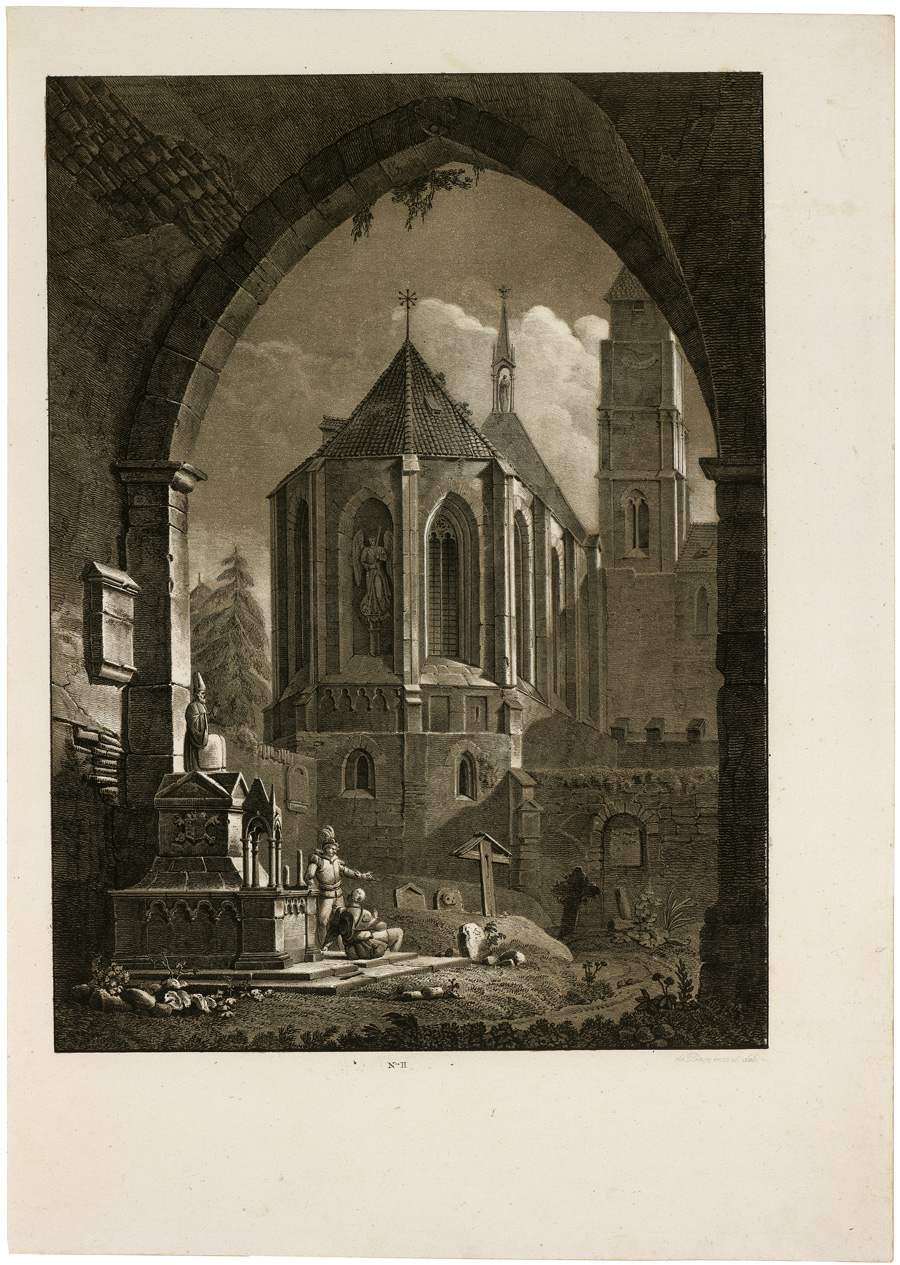Loading the page ...
Antonio de Pian
(1784 Venice – 1851 Vienna)
Five Sheets after Own Inventions: Interior of a Gothic Church with a Knight’s Tomb; View of the Chancel and Cemetery of a Gothic Church; Interment of a Cinerary Urn in a Crypt; An Antique Hall with Women Bathing; Portico of a Gothic Church with Torchlight Burial. Five lithographs with different tint-stones in several grey and brown tones. Ca. 45.1 x 33 cm. (1820). Schwarz, Die Anfänge der Lithographie in Österreich, 155, 5, 1–5.
The complete set is extremely rare. Schwarz mentions only few examples.
Antonio de Pian, an architecture and scene painter and lithographer, received his artistic training in Venice and Vienna and his early work shows the influence of Canaletto’s architectural caprices. In 1821 he was appointed official painter to the Austrian capital’s Hoftheater. His printed work totalling 15 lithographs, which were produced mainly in the years 1820–21, betrays de Pian’s training as a stage designer with a keen sense of dramatic effect. Entirely in keeping with the prevailing taste of the age, the architecture of the Middle Ages plays an eminent role in de Pian’s iconography and illustrates the Romantic nostalgia for a God-fearing age in the distant past. Thus he shows the eerily lit interior of a Gothic church, in which a man in mediaeval dress pauses lost in thought before a tombstone, and a group of figures attending a funeral in a gloomy vault illuminated by flickering torches. In contrast to the profound and intellectual symbolism of Schinkel’s imagery, de Pian’s iconographic repertoire is more superficial. His picturesque compositions serve primarily decorative purposes, while his subject matter reveals a kinship with that of the contemporary lithographic work of the Quaglio brothers.
Very fine, contrasting impressions with wide margins. Slight traces of handling, otherwise very well preserved.
